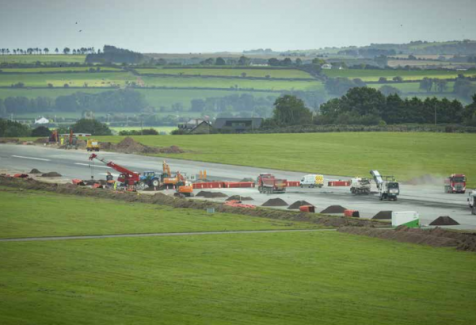Sustainability Ambassador Programme
Our sustainability ambassador programme consists of colleagues from across our group that volunteer to become change-makers and help develop a colleague-driven Climate Positive Culture across the daa group. Our ambassadors help drive awareness and actions in sustainability across every function in our business. Each ambassador is supported to drive sustainability education, with a comprehensive guide to our sustainability ambitions being offered to ambassadors and rolled out to all colleagues. With an educated and empowered colleague base, driven by a Climate Positive Culture we know we can achieve our ambitious targets.
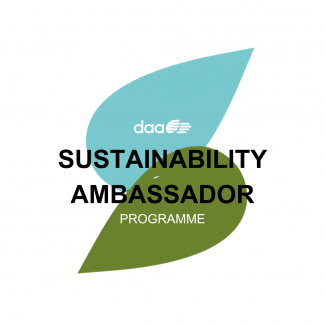
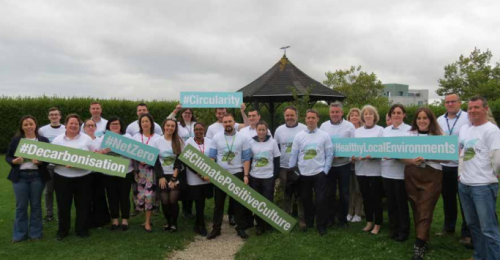
Reduce your use campaign
Like every energy user, winter is particularly energy-intensive for daa. In our case, we have millions of passengers to keep warm and terminals and runways that need ample lighting for safe and smooth running throughout the long hours of darkness. We established a team from across our business to create a plan to reduce our energy needs without compromising safety, warmth or comfort. We set a challenging target to reduce our energy use at Dublin and Cork airports by 10%, across our campuses from October to February. Key actions include controlling heating at times to match flight schedules, staggering entrance door openings to reduce heat loss and monitoring lighting usages across the campus. These actions generated major energy savings of 32% at Dublin Airport and 25% at Cork Airport during the period October 1 to December 31 2022 against a 2019 baseline.
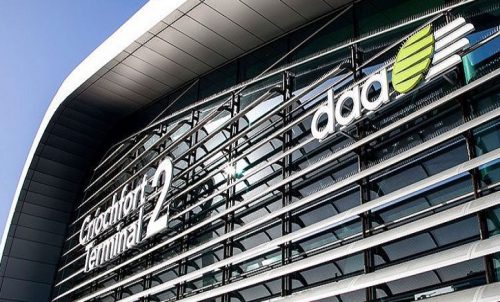
HVO Fleet
Dublin Airport has achieved a 90% reduction in carbon emissions from its airside vehicle by switching from diesel to Hydrotreated Vegetable Oil (HVO). HVO is now being used to power a total of 101 vehicles, which represents 46% present of our airside fleet and will save 400 tonnes of carbon emissions per annum. The switch follows the roll-out of a successful trial in April & May 2023, involving 12 vehicles, which led to a 90% reduction in carbon emissions compared to the use of diesel. Dublin Airport is aiming for two-thirds of its vehicles to be powered by HVO by the end of 2023. This is in addition to the commitment made to transition the airport’s entire light fleet to electric vehicles by 2025.
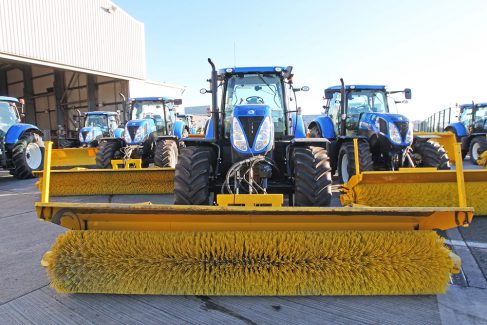
Hedgerows On Our Campuses
We are committed to managing our airport’s ecosystems in order to enhance their biodiversity value and address key causes of biodiversity loss. Among the commitments we make in our Biodiversity Plan is to plant native species.
Dublin Airport currently manages over 11km of hedgerow and its land. Hedgerows are important habitats in the Irish landscape providing food and shelter for insects, birds and small mammals. Without hedges, many birds and small mammals that rarely venture more than a few metres from cover, could become isolated and vulnerable. A hedged landscape also helps regulate water flow and protect water quality by trapping nutrients and sediment as they flow overland before they enter watercourses.
In 2022 we created over 200 metres of new hedgerow at Dublin Airport and allocated funding to plant 900 metres more in Spring 2023. This is upcoming planting will use native species both for new lengths of hedgerow and for adding to existing hedgerows, maximising the benefits for local biodiversity.
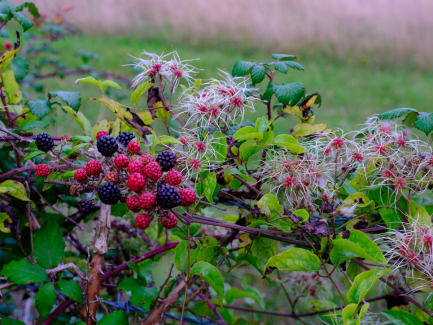
Cork Airport Runway Reconstruction
The Cork Airport Runway Reconstruction was a critically important project for Cork Airport and the South of Ireland. At the same time, a significant national road project, the Dunkettle Interchange was underway approximately 8km from the airport. Engineers deemed that the waste materials from the runway site could serve as excellent base and structural fill material for the interchange.
Approximately 10,200 cubic metres of material from the site was duly reused on this project. The Dunkettle Project did not have to source the equivalent volume of virgin material and Cork Airport avoided sending a substantial amount of this material to landfill.
Further by-products were produced by Phase 1 of our external and campus road projects. All 640 cubic metres of rad base materials were reused, to repair and maintain the laydown area, which eventually returned to use as a carpark. During Phase 2, topsoil from verge works was reused by our Asset Management teams for maintaining the flowerbeds and our wildflower meadows, across our airport campuses. and the winter
